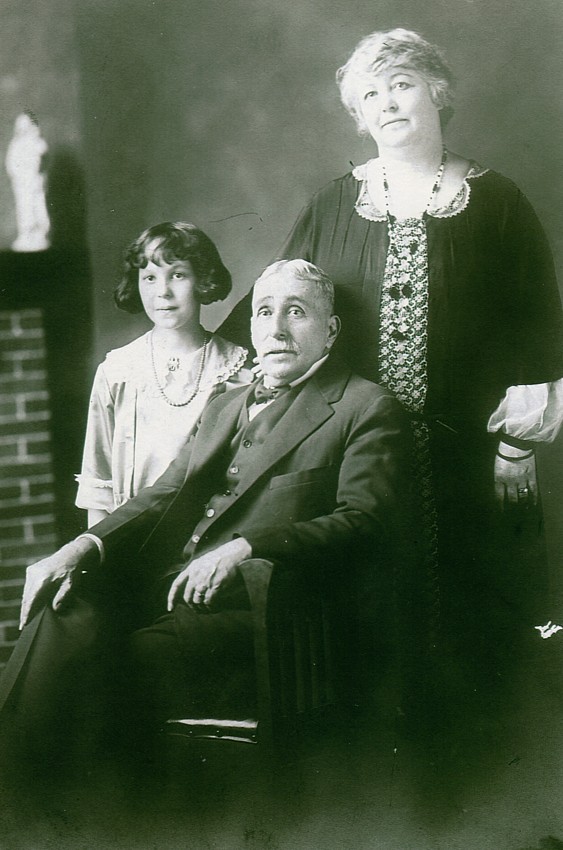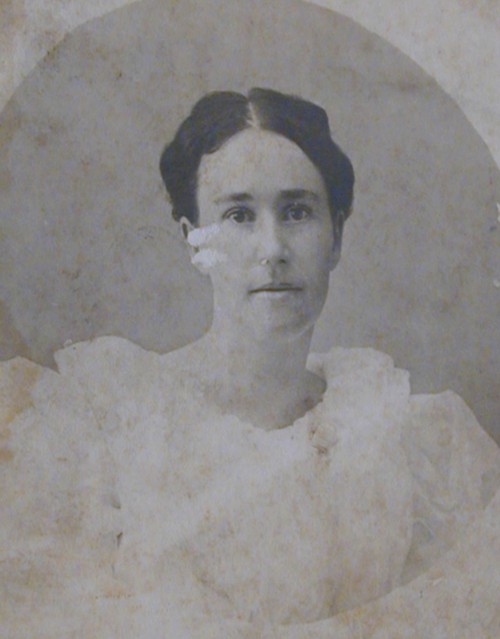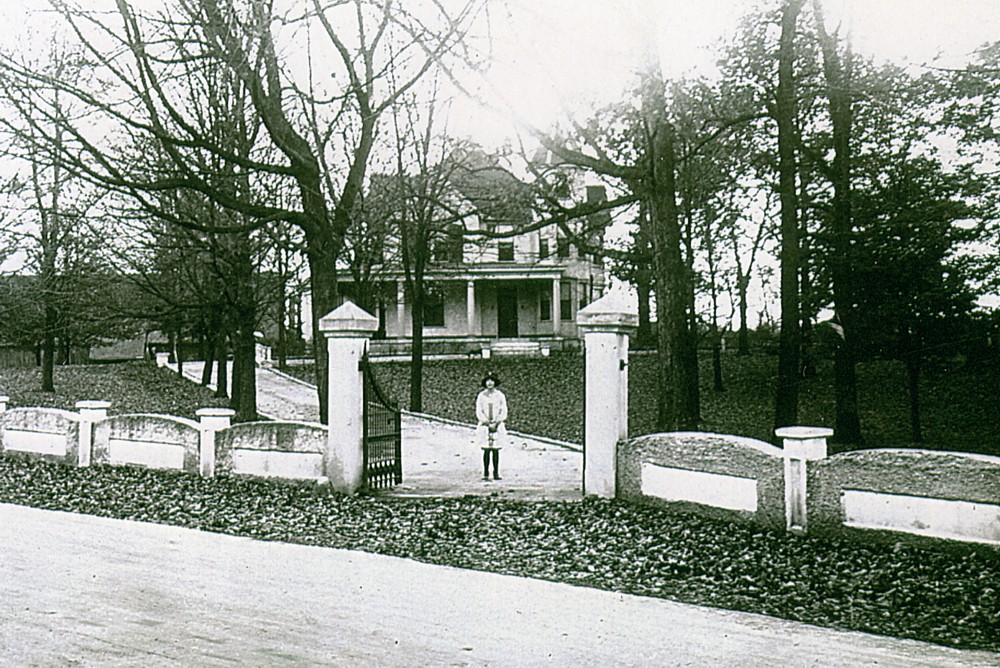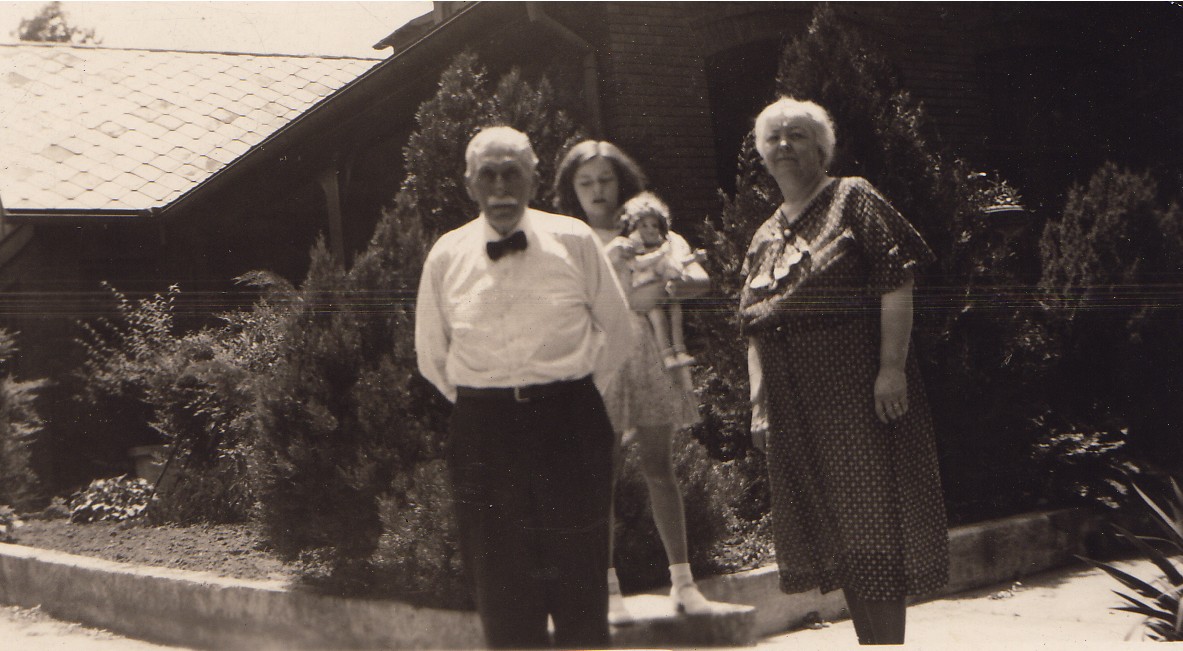I have always lived in or near Seattle, Washington. Although Seattle is my hometown, my ancestors have only been living here since the 1940s. Still, I have a variety of family connections and relatives that have been involved with the history of the city since the 1800s. This post explores some of those connections.
Mayor of Seattle
|
|
The inaugural ride of Seattle's first street car in 1884, shown here at Yesler
and Occidental. My relative Lascelle Struve, wife of mayor Henry Struve
is one of the passengers in the car.
Courtesy University of Washington Libraries Special Collections |
My relative* Henry Struve was the mayor of Seattle between 1882 and 1884. Henry was a lawyer and politician who moved to Seattle with his family in 1879. (*Henry's wife, Lascelle Knighton Struve was the first cousin of my great-great-grandmother
Josephine Martin Plymale. Both women were granddaughters of
Zadock and Susannah Martin.)
Henry Struve was an influential citizen of Seattle and had many appointments, duties and activities that helped to shape the history of the city during its early years. Henry was quite interested in education and served as regent of the Territorial University (later University of Washington). Between 1884 and 1887, he was director of the public schools for Seattle.
He was also highly interested in public transportation and the development of infrastructure and roads in the city. During his term as mayor, he oversaw over $500,000 in improvements to the city, including
regrading the streets. He also helped to develop the city's first cable car system (Seattle Street Railway), which ran from downtown Seattle to the Madison Valley. When the cable car first opened in 1884, his wife Lascelle was on the inaugural ride.
Henry operated a private law practice in Seattle, where he represented many big clients, including railroad companies. He also helped to develop banks and insurance companies in Seattle. He and his family were living in Seattle during the
great fire of 1889, but escaped unharmed. The Home Insurance Company, which he co-founded, paid out large sums in claims due to damage from the fire. The Struve family first lived in a house at 2nd and Pine in downtown Seattle (just two blocks from what is now the Pike Place Market). Later, during the late 1890s, they moved to a house on First Hill.
Georgetown
 |
Effie Merriman Bellinger in 1887, a pioneer settler and
business owner of Georgetown, Seattle
Photo courtesy Southern Oregon Historical Society |
In about 1898, my great-great-great-aunt Effie Merriman Bellinger moved by herself to Georgetown, Washington (now a part of Seattle). Effie was a recently divorced dressmaker who had previously lived in Oregon. I don't know why she moved by herself to Georgetown, but she probably wanted to start a new life after her divorce. At the time, Georgetown was a small but growing town on the Duwamish River, just south of Seattle. The town was originally called Duwamish, after the river adjacent to it. In 1890, it was renamed Georgetown, after the son of the town's developer. In 1904, Georgetown incorporated as an independent city. The main impetus behind the movement to incorporate was lobbying of saloon and brewery owners who did not want to lose the right to manufacture or sell liquor if they remained unincorporated. Georgetown was an independent city from 1904 until 1910, when it was annexed by Seattle.
When Effie Bellinger moved to Georgetown in about 1898, she opened up a dressmaking parlor in the town center, being one of its pioneer business owners. She did not remain single for long and was soon married to Joseph Hill, a street car conductor. Later, Joseph worked for many decades as a Deputy King County Sheriff. Effie lived for more than 50 years in a house in the center of Georgetown, at Bailey Street and Carleton Avenue. Their house was only a block away from the King County Hospital (precursor to Harborview Hospital on First Hill). Their house was also very close to the Duwamish River, before the river was straightened in 1913 and the course of the river changed. Their house was eventually torn down and the site is now covered by an onramp to I-5.
In 1903, another great-great-great aunt Josephine Merriman Beek also moved to Georgetown, to be closer to her sister Effie. Josephine's husband John Beek was elected City Clerk of Georgetown in 1904 and remained in that position until the city was annexed in 1910. John was quite involved with city business and the growth of the region during that time period. In 1909, the city passed an ordinance that closed saloons at 1:00 a.m. (they were previously allowed to remain open 24 hours a day). It is suggested that John Beek's activities as City Clerk might have been partially responsible for the citizens electing to annex to Seattle in 1910. In late 1909, it had become apparent that John had doctored the city's financial records. Since John ran unopposed for his position as City Clerk, there were newspaper campaigns that called on the citizens to vote for annexation as the only way to get John out of office.
The Beek family lived in a house just east of Georgetown on Beacon Hill. In 1915, they sold their house and moved to north Seattle. John later worked for many years as an accountant for the city of Seattle.
Boeing
 |
from the 1973 Boeing Annual Report
Courtesy University of Washington Libraries
Special Collections
|
In 1948, my maternal grandparents Ben and Patricia Plymale moved to Seattle from Portland, Oregon. They were married in June 1948, and after spending their honeymoon in San Francisco, they moved immediately to Seattle so that Ben could attend graduate school. Between 1948 and 1951, Ben and Patricia lived in an apartment in the Phinney Ridge neighborhood of north Seattle (the Phinney Apartments). While living there, Ben attended graduate school at the nearby University of Washington and Patricia worked as a secretary at the Sand Point Naval Air Station on Lake Washington.
In 1950, Ben quit graduate school to accept a job offer as an engineer at Boeing Company. Because Ben was now working at the Boeing plant in south Seattle, they decided to move. Between 1951 and 1953, they lived in an apartment in the Rainier Beach neighborhood of south Seattle (now the Lake Washington Apartments). In 1953, they purchased a house in the Mount Baker neighborhood of south Seattle, which the family owned for 30 years. Later, after their divorce, Ben lived in the Seward Park neighborhood and Patricia lived in the Madison Park neighborhood.
Except for a brief stint (1968-1972) working in the Pentagon as an Assistant Director to the Secretary of Defense, Ben remained employed by Boeing from 1950 until his death in 1981. He began his career as an engineer, but his brilliance allowed him to advance quickly within the company and he quickly became a company executive and an authority of strategic space systems. He was one of the managers who developed the Minuteman missile program. From 1972 to 1981, Ben was a vice president of Boeing. During his time as vice president, he managed the Space and Ballistic Missile Group, the company's marketing program, and the 757 and 767 airplane system integrations.
The city of Seattle owed much of its growth to the Boeing Company, which helped to revitalize the economy after World War II and became a major local employer. It could be argued then that Ben's high level of involvement with the company had an indirect, but major impact on the history of the city.
Baseball
 |
My great-great-great-uncle John Beek providing his input on why the Seattle
baseball team (then the Seattle Turks) always seemed to lose their games.
From a June 4, 1908 edition of the Seattle Daily Times |
I have never been interested in professional sports or identified with my city's sports teams. Still, professional teams seem to be a source of much pride and cohesion for many American cities. When doing my research, I cannot help but notice how much this hasn't really changed over the years. The city of Seattle has had a baseball team since 1890. The names of Seattle's baseball team has changed over the years and has included: Seattles, Seattle Braves, Seattle Siwashes, Seattle Turks, Seattle Giants, Seattle Rainiers, Seattle Indians, Seattle Rainiers (again), Seattle Angels, Seattle Pilots and finally the Seattle Mariners.
 |
Portion of the 1912 Baist map of Seattle showing the location of the Band Box
Park, which was used by Seattle's baseball teams between 1907 and 1913.
The area shown in this map now includes the Yesler Terrace Housing
Projects, the Bailey Gatzert Elementary School, the King County Archives
and the Juvenile Detention Center
Courtesy pauldorpat.com |
Prior to 1913, Seattle had no official stadium for its baseball team. Before that though (between 1907 and 1913), they did play at a baseball park in the Central Area neighborhood of Seattle known as "Band Box Park". Although that baseball park is long gone, it just happens to have been at the site of my previous workplace, the King County Archives, at 12th and Yesler. Coincidentally, this location also happens to be in the recorded subdivision of Struve's Addition (named after the family of my relative, mayor Henry Struve). Band Box Park was constructed at the same time (as a sister project) as the Pike Place Market.
Band Box Park was succeeded by Dugdale Field in 1913, followed in 1938 by Sicks' Stadium. Sicks' Stadium (at Rainier and McClellan) was Seattle's baseball stadium for 38 years, before the Kingdome and Safeco Field.
















